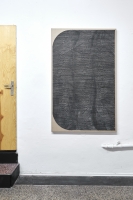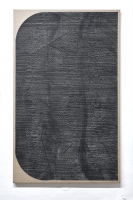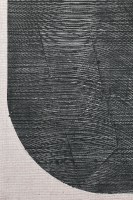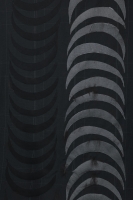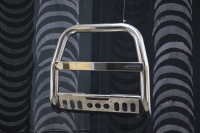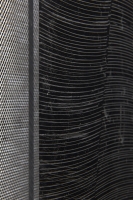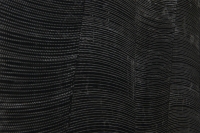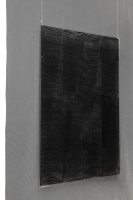"Dark Wave Deco"
Berlinskej Model
Beneath Daniel Vlček’s current project the story of the cult motif of the Mistubishi Ecstasy pill, and its connotations, unfolds. This is the tragic story of the pill’s large-scale producer, the Dutch Gunther Ashcroft, who began mass producing these pills in the early 90’s and distributing them across dance floors in Western Europe. This is the story of that well-known curiosity, Ashcroft stamping his pills with the logo of the van in which he began producing them. Of course, this story isn’t enough. It’s what the story offers which is far more interesting: the practically unconscious method of reading the relationship between the automobile and synthetic drug as discoveries which both cause dizziness. The automobile does so with its speed, the Ecstasy with its blurring of the borders of the ego via the mechanical repetition of club music and Rave culture with which it is internally linked. The motif of the automobile logo on a drug is thus given the breath of the futurism of the early 20th century and its intoxication with speed and noise. The newer concept of devotion to the inhuman, machine and artificial is, on the other hand, evident in cyberpunk and the delirious texts of the dark prince of Accelerationism, Nick Land, who spent the better part of his academic career at the Warwick University taking amphetamines. That is to say, he „fed on speed.“ In the same way, it is possible to take the relation of these human phenomena and talk about the external and internal car.
Assembly line production also references Techno, and to a certain extent it is no coincidence that the home of aloof and repetitive techno is Detroit, also the home of the first automobiles. It was in Detroit that the Ford Company long dominated, employing the majority of the city, creating prosperity and allowing for the city to be seen as the backbone of American industry. The inhuman precision of the machine, along with the libidinal undercurrent of rave devotion are the collective sign of Daniel Vlček’s work. Here the infusion of machine appears both on the plane of the painterly process– the repetition of the circular motif and moire optical effect produced by the covering of layers of concurrent lines– and on the plane of material– the use of art protis technology. Daniel Vlček adds soot to his paint, which is also added to tires. For his art protis piece, he has used scraps from a car seat cover factory. His work is therefore as if intoxicated with these substances. The last and most obvious aspect of this exhibition is connected to machinery and rhythm. This is done through the artist’s choice of icon and symbol. In addition to the covered Mitsubishi pill motif the viewer is met with a wall carpet covered with a series of half-moons, which are automatically associated with movement and rhythm.
Josef Mrva Jr.

